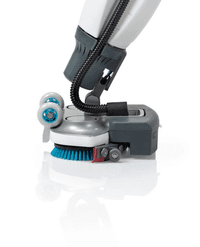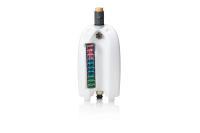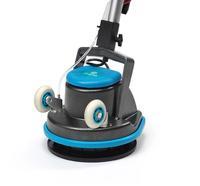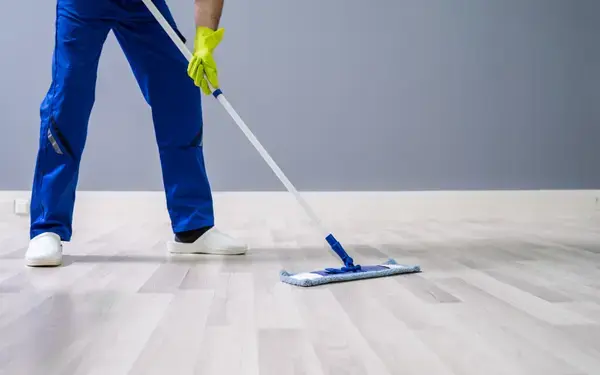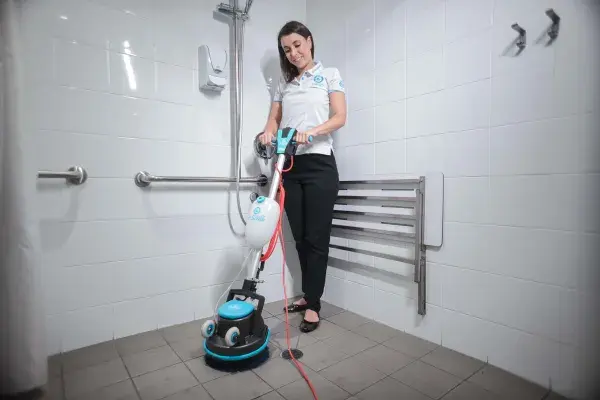You are reading: Why Won't My Floor Tiles Stay Clean? Causes and Solutions
28 August 2022
7min read time
Brooke Payne
Why Won't My Floor Tiles Stay Clean? Causes and Solutions
Share:

Key Insights
- Dusting and Sweeping Before Mopping: It’s important to dust and sweep tiles before mopping to prevent dirt buildup and ensure a cleaner finish. Some advanced mops like the i-fibre can minimize the need for dust mopping, but it remains a good practice as part of regular maintenance.
- Avoiding Chemical Overuse: Overusing cleaning chemicals can lead to residue buildup, making floors look dirtier and potentially slippery. Using the right cleaning tools, like the i-mop, can often eliminate the need for chemicals, or at least reduce their use to every other cleaning.
- Choosing the Right Mop: Traditional mops can be inefficient, removing only 30-40% of dirt. Advanced options like the i-mop clean faster, more effectively, and leave floors dry almost immediately. It’s crucial to select a mop that’s suitable for tile floors and to consider the type of tile when choosing cleaning methods.
Are you dusting and sweeping before you bring out the mop?
When it comes to mopping tiles, they can collect a lot of dust and dirt. If we don’t brush this away before mopping, it can build up and cause the tiles to look unclean. Even when not mopping, we recommend doing this anyway as part of a regular maintenance cleaning process.
While some microfibre mops such as i-fibre are designed to reduce the need for dust mopping by having large debris channels built in, dust mopping is good practise before your damp cleaning process.
Are you using too many chemicals?
Overuse of chemicals will almost always lead to an ‘unclean’ look and feel. This is known as chemical residue buildup, a common floor maintenance issue. These chemicals need to be scrubbed off or completely removed, as this chemical residue is doing what these chemicals are designed to do – attract dirt – which is making your floor look dirty! This can also be a problem with safety as these floors can also become slippery.

It might seem bizarre that using chemicals can, in fact, make the floor dirtier - or at least appear dirtier - but it’s an unfortunate truth. Not only does chemical residue attract dirt and make your floor look dirty, it can also provide a place for bacteria to grow.
The good news is this: With the right cleaning tool, chemicals might not even be necessary. Our i-mop , a leading floor scrubber machine in Australia & New Zealand, can clean most floors with only water, with only small uses of chemicals occasionally.
In addition, we have a selection of chemical pods that are good for the environment and, used in the right way, won’t leave your floors sticky.
For bathroom floors, we recommend the i-dose E44 washroom cleaner. For cleaning a kitchen or dirty workshop floor, you should use the i-dose E73 degreaser (perfect for cleaning commercial kitchens too!) If you’re cleaning general areas, we usually recommend the i-dose E33 Neutral floor cleaner.
You can get in touch with our team to see how our products can work for you.
When it comes to cleaning hard floors, in many situations we recommend only using chemicals every second time unless the floor is exceptionally dirty. This stops you from getting chemical residue build-up.
A side note: If you’re cleaning tiled floors such as travertine, or any type of stone floors, it’s important that you don’t use strong acidic cleaning chemicals.

What sort of mop are you using?
When it comes to mops, a lot of us only use a traditional mop and bucket. These can be cumbersome and ineffective, only removing 30-40% of the dirt. Most of the dirt just gets moved around.
It’s important when you choose a mop that not only is it effective, it is also designed for tile floor cleaning.
The i-team’s i-mop can clean all types of hard floors. It not only cleans up to 70% faster than traditional mops, it removes over 97% of dirt. Plus, the floors are left dry within seconds, rather than 10 minutes.
The i-mop is an ideal addition to any commercial cleaning application, because it’s quick, efficient and easily transportable. In addition, if part of your building has tiled floors but the rest is a different hard floor material, it can clean both without any issue.
Of course, there are different types of tiled floors and so they should be cleaned differently. As mentioned, you shouldn’t use strong acidic cleaners on travertine floors.
When it comes to cleaning ceramic tiles and grout, for best results use brushes, rather than pads, on your i-mop or other floor scrubber. The brushes make sure that you really get into the grouted sections of the tile. You should always research your specific type of tile to ensure you don’t apply the wrong cleaning methods, and if you need some help, feel free to contact our team.
Tile floor cleaning processes can be different depending on the tile and application, but if you follow these key steps, you’ll ensure that your tiles are clean in the long-term. Manual mopping of tiles and grout is a time-consuming process, making an investment in an industrial floor mop completely worth it.
Need to reach some hard-to-get-to areas? That’s no problem. We also offer the i-scrub 21B, which can clean any tile in any seemingly unreachable area, for example in showers or on stairs. The i-scrub 21B is best suited to situations where there’s too much dirt buildup to manually clean but it’s not worth using a larger floor mop.
It can also be used in conjunction with the i-mop, making them both the perfect addition to every commercial cleaning company’s suite of cleaning equipment.
Read more in our article on why are my floors streaky after i-mop?

Get in touch to see for yourself just how i-team’s suite of products work.
People Also Ask: FAQ's
Why do my tile floors always look dirty?
You Have Porous Tiles
Porous tile has small holes that can trap dirt and grime, making thorough cleaning a bit more challenging. If your tile floors are made from porous materials, try using a soft brush with a mixture of water and vinegar for effective cleaning.
Why do my tile floors look cloudy after mopping?
Over time, detergent can build up and leave a sticky residue that won’t respond to buffing. This residue can get embedded into the floor finish, causing it to look hazy. However, detergents aren’t the only culprits. Dust mops can also contribute to buff haze.
How to get floor tiles really clean?
Regular tile cleaning makes it easier to use natural products, which may not be as strong as chemical or solvent-based cleaners. A great way to clean bathroom tiles is with vinegar. Mix equal parts white vinegar and water in a spray bottle, then spray directly onto the tiles for an effective and eco-friendly clean.
What is the best way to keep tile floors clean?
Sweep or vacuum your tile floors a couple of times a week to prevent sand and grit from dulling or scratching the surface. Once the dirt is removed, you’re ready to mop. Use a mild detergent mixed with hot water and apply it with a rag or chamois mop rather than a sponge mop for the best results.
Why are my tiles still dirty after mopping?
Forgetting to Rinse
Some cleaners mistakenly think that more soap means a cleaner floor, but they often forget to rinse out their mop pad. This leaves the mop saturated with dirty water, which then spreads dirt around instead of lifting it.
References
https://ctasc.com/expert-answers/my-tile-looks-dirty-and-wont-come-clean/
https://www.apartmenttherapy.com/ceramic-tile-floor-cleaning-method-37243757
Products Featured in this Article
Media and Insights
Join the movement that's changing what clean means.
Be part of a cleaner world. Get a live demo at a time that suits you.
Book a Demo